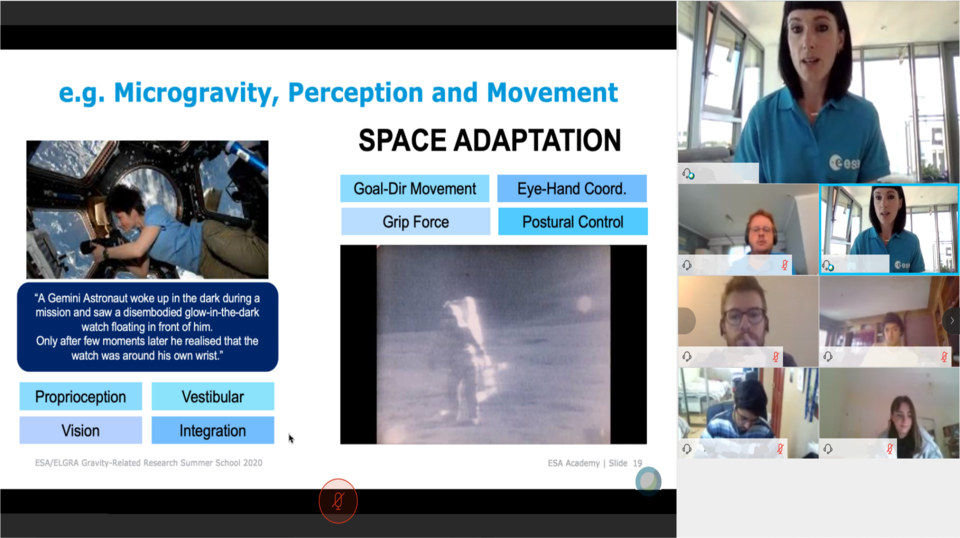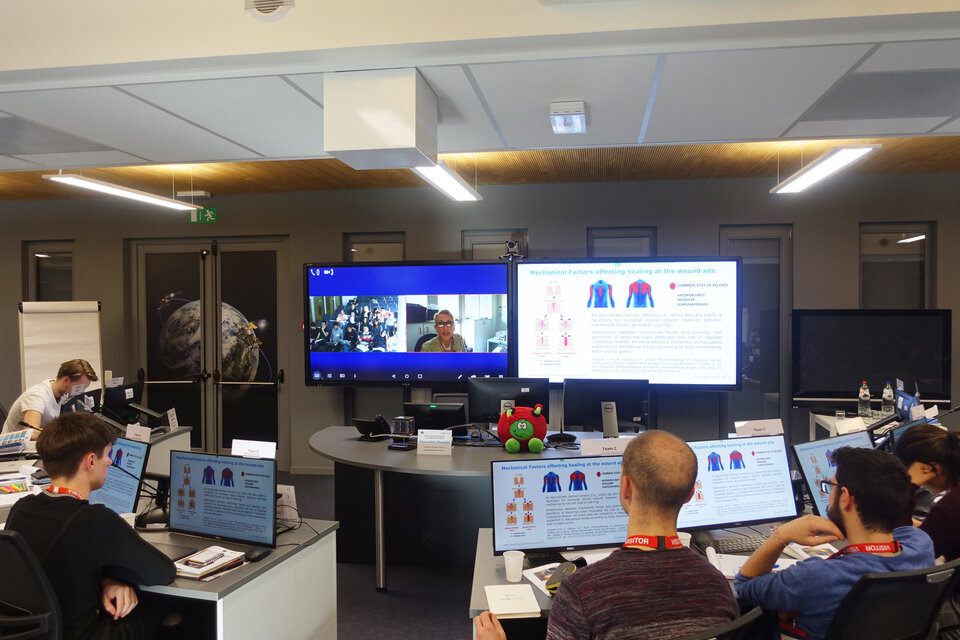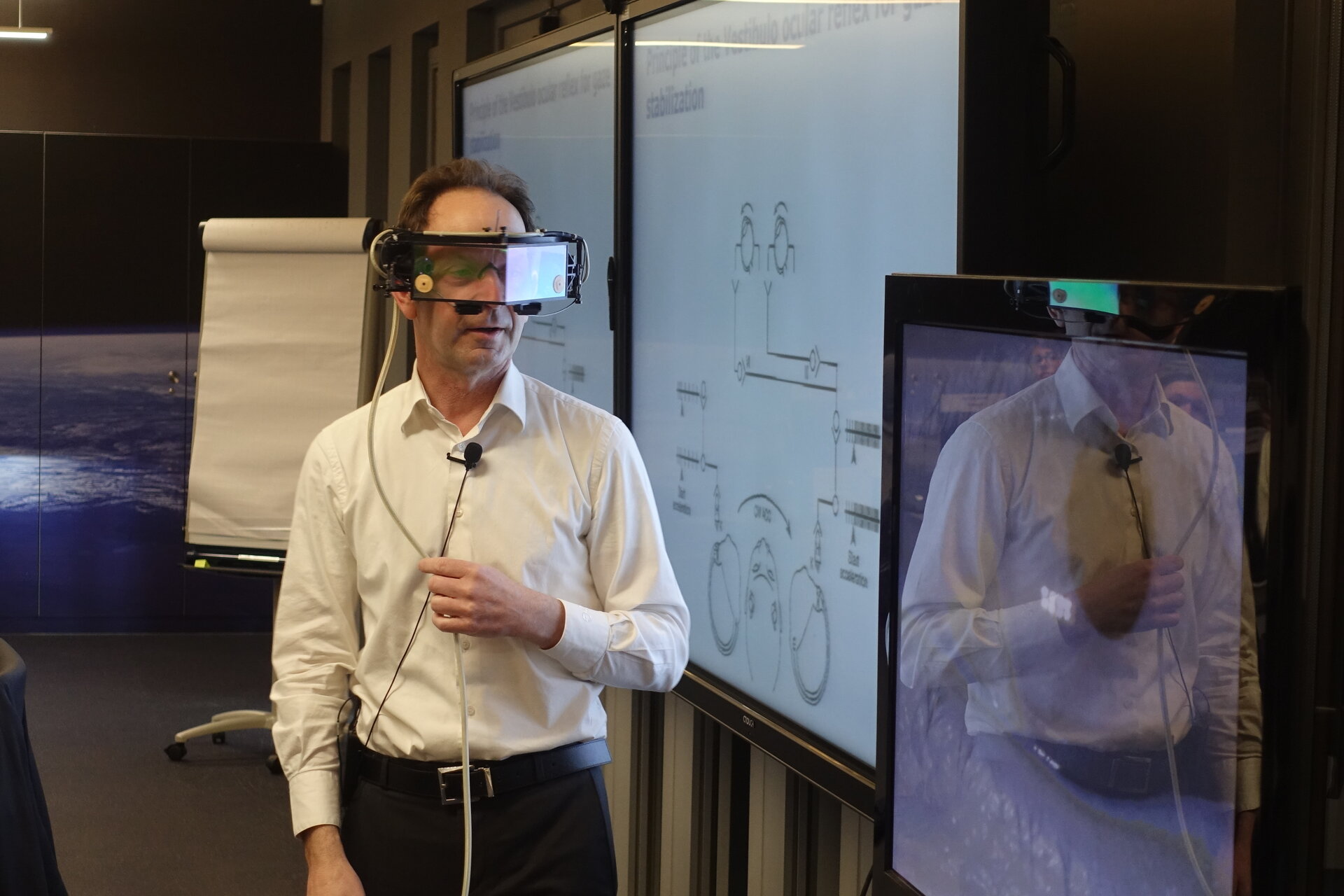Participate in ESA Academy’s Online Human Space Physiology Training Course
What is it really like to live in space? What happens to the body in microgravity? Thanks to a training course offered by ESA’s Education and Space Medicine Teams, medical and life sciences university students can find out.
ESA’s Education Office and the Space Medicine Team invite BSc and MSc university students studying medicine, allied healthcare subjects, life, biomedical or biological sciences to apply to the Online Human Space Physiology Training Course 2020. The course will be held between 12 and 23 October 2020. Online sessions will be taking place during the day according to the Central European Summer Time (CEST). Participants will be requested to attend all sessions live. During the first week of the course, students will discover how spaceflight represents a significant physiological challenge to the human body. Having evolved in Earth’s gravity, our bodies adapt when in microgravity. Some of these adaptations may comprise astronaut health and wellbeing, either in flight or upon return to Earth. As a result, these adaptations must be understood in order to inform development of effective strategies to support humans during space missions to the International Space Station and beyond.

In addition to learning about life in space and the physiological adaptations associated with it, students will discover how a range of Earth-based analogues, such as long-term (head down) bed rest and over-wintering in Antarctica, are used to investigate some of the potential underlying mechanisms. Finally, current and some potential future approaches to mitigate the effects of the space environment on the human body will be discussed.
During the second week of the programme, students will work on a remote team project, addressing some of the major issues and challenges human spaceflight is facing. Work will be distributed flexibly during this part of the training course to allow teams to tackle their tasks independently. Each team will be supported through virtual tutoring by an expert. On the final day of the course, each team will present their findings to the other participants.
Students participating in this training course can expect to be introduced to the following topics:
- What it’s really like to live in space
- The challenges, lessons, and successes that have led to permanent occupation of the International Space Station
- The conditions that the ISS provides to protect and support life
- How the senses perceive being ‘weightless’
- How key physiological systems respond to microgravity, what mechanisms underlie these changes, and some approaches that may be used to mitigate such effects
- How human space physiology research is performed both in space, and using Earth-based analogues
- Major issues and challenges current human spaceflight and future space exploration must overcome
Preliminary Schedule
| Day 1 |
Venturing into Space: Introduction A History of Human Spaceflight The Realities of the Space Environment Life Support on the ISS |
| Day 2 |
Human 'Spaceflight' Science: A Sense of Space How Do Animal and Cellular Studies Help Our Understanding of Human Space Physiology The Vestibular System and Microgravity Induced Neuroplasticity ESA Human Research Activities - ISS and Ground Analogues |
| Day 3 |
Key Space Environment Adaptation: Introduction to Team Project Effects of Microgravity on the Cardiovascular System Fundamentals of Muscle and Neuromuscular Function in Space Fundamentals of Bone Physiology in Space Immunology in Space |
| Day 4 |
Space Medicine Support: Medical Support of ISS Astronauts Nutritional Support for Astronauts Exercise and Physical Rehabilitation for Spaceflight Psychological Support for Spaceflight |
| Day 5 |
Preparing to Venture Beyond the ISS & LEO: Space Radiation Hot Topics in Human Spaceflight Space Medicine Projects at the EAC Space Suits - Working outside your Spacecraft |
| Days 6 to 9 | Team Project |
| Day 10 | Team Project Presentations & Training Course Conclusion |

Upon completion of the training course, students will be evaluated on their team project and will receive a certificate of participation as well as a course transcript, allowing them to request ECTS credit(s) from their respective universities.
Interested students can fill in the application form here. The deadline for submission of completed applications is 10 August 2020 at 23:59pm CET.
Further information
Who can apply?
Students enrolled in university and who fulfil the following criteria at the time of application may be eligible:
- aged minimum 18 years old. ESA Academy and relevant partners will only appraise applications from students who have no or limited professional experience in relevant scientific or other space-related topics;
- be a citizen of an ESA Member States, Associate States and Canada;
- be enrolled as a BSc or MSc student (or equivalent) in a university for the year 2020-2021 (not graduating before the end of the training course);
- be studying medicine, allied healthcare subjects, life, biomedical or biological sciences.
How do I apply?
- Fill in the application form;
- Upload a motivation letter (PDF, maximum 1 page, no images);
- Upload a CV (Europass format, PDF, maximum 2 pages);
- Upload a formal recommendation letter (PDF, maximum 1 page, including signature, no images) from a university professor or an academic supervisor from your current university (if not possible due to current confinement situation in your country please ask a university professor or an academic supervisor to send a recommendation email to tlp@esa.int);
- Upload a copy of academic records (PDF);
- Upload a short abstract (maximum 500 words) based on the title "Being in space can induce physiological de-conditioning". Briefly define the major changes observed in a single physiological system (of your choice) and discuss whether this presents any issues for a mission to the Moon (PDF, no images).
All correspondence and documents should be in English (except academic records if not available).
For more information, please contact: tlp@esa.int


